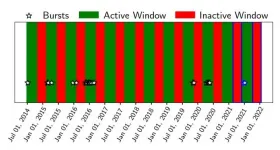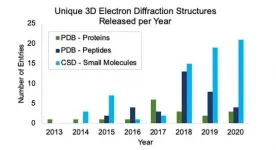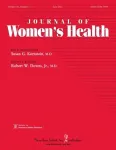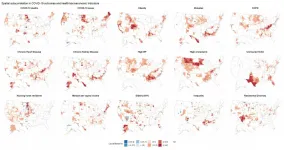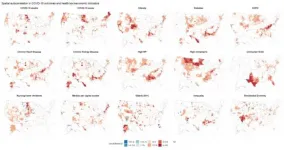(Press-News.org) Cancer survivors ages 18 to 64 faced fewer financial barriers to health care after the Affordable Care Act was implemented than they did before the landmark law took effect, University of Michigan researchers found.
In fact, they believe the ACA helped the financial burden (problems related to the cost of medical care) for younger cancer survivors fall to its lowest estimated levels in 20 years.
"There has been a lot of talk about the ACA affecting people who don't have the Medicare safety net," said Christopher Su, M.D., a clinical fellow in the division of hematology and oncology at Michigan Medicine and the first author of the paper. "We were able to drill down to that and show that it did make a difference to younger cancer survivors."
Su and his team analyzed data from more than 20,000 Americans who responded to the National Health Interview Survey, a long-running series of interviews conducted by a part of the Centers for Disease Control and Prevention that collects data on everything from chronic conditions to vaccinations.
They found that younger cancer survivors were less likely to delay treatment because of cost and didn't have as much trouble paying for medications or dental care from 2014 to 2018. This was the five-year period after several key features of the ACA -- including the Health Insurance Marketplace, through which individuals, families and small businesses can compare and purchase health insurance plans -- went into effect.
In contrast, cancer survivors 65 and older didn't experience much of a change in their ability to afford health care post-ACA, likely because so many were on Medicare.
"When the major provisions of the Affordable Care Act came into play, all the measures of affordability came down for the younger survivors," Su said, "but they actually stayed the same for the Medicare population."
When the researchers traced these measures back over the past two decades, they saw that, between 2015 and 2017, all had dropped to their lowest points since 1999 for adult cancer survivors younger than 65. Essentially, younger cancer survivors were more likely to be able to afford their health care than at any other time since the 21st century began.
"At the end of the day, the ACA really benefits people who are vulnerable," Su said, "who are at high risk, who, for whatever reason, need to come to get medical care a lot and the medical care that they get is expensive. I think we can say that cancer patients fit this definition."
In addition, the number of younger cancer survivors without health insurance dropped and Medicaid enrollment for this group increased after the ACA became law.
Given the ACA's expansion of eligibility for Medicaid -- the United States' public health insurance program for those with a low income or a disability and/or who are elderly -- and its requirement that the majority of Americans buy health insurance or pay a penalty, these findings aren't surprising, Su said. (Starting in 2019, people are no longer fined if they don't purchase health insurance, but that change took place after the period from which researchers analyzed data.)
Yet the results do point to another way that the ACA has helped younger cancer survivors in particular, who often rely on their jobs for health insurance and can face difficult decisions when they're not able to work because of illness and long-term treatment.
"The younger working population doesn't have pensions," Su said. "Most don't have a rainy day fund stored away for them if they get cancer. They're still trying to work, still trying to put bread on the table. But the ACA made it easier to sign up for Medicaid, to sign up for a health insurance plan that's affordable to them, and now they have a better umbrella to fall back on for their health care expenses without jeopardizing their already precarious finances because cancer put them out of work or reduced the time that they could be working."
"I think it made a tremendous difference," he added.
The spike in Medicaid enrollment for younger cancer survivors also prompted Su and his team to wonder whether Medicaid expansion was driving the drop in financial barriers for this population.
Ideally, they would have been able to compare younger cancer survivors in states that had expanded Medicaid versus those that had not. Although the National Health Interview Survey does not break its data down by state, the researchers were able to use regions where the majority of states had expanded Medicaid, including the West and Northeast, and those that had been more resistant to Medicaid expansion, like the South, as proxies.
The analysis didn't turn up many differences, leading Su et al. to conclude that other aspects of the ACA had played just as much of a role in decreasing financial barriers for younger cancer survivors as Medicaid expansion.
"We found that within geographic regions, the numbers are similar, which argues more strongly to the ACA having a very comprehensive impact," Su said. "Things like the employer mandate [which required all companies of a certain size to provide health insurance for their employees] and establishing the health care exchanges that made it easier for people to get insurance -- all of these things incrementally played a difference in the health care of the cancer survivors."
INFORMATION:
The COVID-19 pandemic and the situations of stress and sadness associated with it have not significantly increased the prevalence of depression and anxiety among participants in the Brazilian Longitudinal Study of Adult Health (ELSA-Brazil) who live in the city of São Paulo.
ELSA-Brazil has been monitoring the overall health of 15,000 civil servants at six public universities and research centers in Brazil since 2008. The survey on mental health during the pandemic was conducted in São Paulo and involved 2,117 members of the staff of the University of São Paulo (USP) - in active service or retired - who are participants in the nationwide study and aged 50-80.
The survey is supported by São Paulo Research Foundation ...
In early March 2020, the University of Washington became the first four-year U.S. university to transition to online-only classes due to the COVID-19 pandemic.
Many researchers predicted severe consequences of these physical distancing measures. To understand how this change affected college students' mental health, UW researchers surveyed 147 UW students over the 2020 spring quarter, which began shortly after the university transitioned to online-only classes. The team compared the students' responses to a previous survey of 253 students in spring quarter 2019.
The researchers didn't see much change in average levels of students' depressive symptoms, anxiety, stress or loneliness between 2019 and 2020 or between the beginning and the end of spring quarter ...
Magnetars are bizarre objects -- massive, spinning neutron stars with magnetic fields among the most powerful known, capable of shooting off brief bursts of radio waves so bright they're visible across the universe.
A team of astrophysicists has now found another peculiarity of magnetars: They can emit bursts of low energy gamma rays in a pattern never before seen in any other astronomical object.
It's unclear why this should be, but magnetars themselves are poorly understood, with dozens of theories about how they produce radio and gamma ray bursts. The recognition of this unusual pattern of gamma ray activity ...
Bacterial vaginosis is the most common and recurrent gynecological condition affecting nearly 30% of women between the ages of 15 and 44, according to the U.S. Centers for Disease Control and Prevention. A University of Arizona Health Sciences-led study recently identified a specific bacteria family and uncovered how it contributes to bacterial vaginosis, paving the way for new insights into disease prevention and treatment.
Led by Melissa Herbst-Kralovetz, PhD, a member of the BIO5 Institute and associate professor of basic medical sciences at the College of Medicine - Phoenix, researchers found that members of the Veillonellaceae bacteria family contribute to an increase in inflammation and cell death, and alter the acidity of the cervical microenvironment. These changes support bacterial ...
CAMBRIDGE July 13, 2021 - To date, solving structures of potential therapeutics using X-ray diffraction (XRD) has been an assumed, pivotal step in the drug development process. But a recent paper by a team of researchers led by NanoImaging Services shows how microcrystal electron diffraction (MicroED) is growing to obtain the structures of potential pharmaceuticals.
Three-dimensional crystal structures that show the relative positions of atoms, bonds and intramolecular interactions are needed to understand stability, reactivity, solubility and, ultimately, suitability ...
New Rochelle, NY, July 13, 2021--Males with COVID-19 had significantly higher rates of hospitalization and of transfer to the intensive care unit (ICU) according to a new study. A higher percentage of males died of COVID-19 compared to females, as reported in the study published in the peer-reviewed Journal of Women's Health. Click here to read the article now.
Joanne Michelle Gomez, MD, Rush University Medical Center, and coauthors, studied the first 8,108 positive COVID-19 patients that presented to the Rush University System from March 1-June 21, 2020. Nineteen percent of males required hospitalization, compared to 13% of females. ...
In a new study of adults from the general population who were infected with COVID-19 in 2020, more than a quarter report not having fully recovered after six to eight months. Those findings are described this week in the open-access journal PLOS ONE by Milo Puhan and colleagues at the University of Zurich, Switzerland.
While initial public health responses to the SARS-CoV-2 virus focused on reducing the acute burden of COVID-19, a growing body of evidence indicates that the infection can also result in longer-term physical and mental health consequences. These long-term consequences, currently referred to as "post-COVID-19 syndrome" or "Long Covid" are ...
COVID-19 vaccination strategies in the United States are informed by individual characteristics such as age and occupation. A study published in the open access journal PLOS Medicine by Sasikiran Kandula and Jeffrey Shaman of Columbia University, New York, United States suggests that including socioeconomic indicators as prioritization criteria for vaccination may help minimize severe outcomes, particularly deaths.
Efforts to reduce COVID-19 mortality rates in the US have focused on prioritizing vaccination initially for those at a higher risk of severe outcomes. The effectiveness of population-level ...
An estimated 43 percent of the variability in U.S. COVID-19 mortality is linked with county-level socioeconomic indicators and health vulnerabilities, with the strongest association seen in the proportions of people living with chronic kidney disease and living in nursing homes. The study by Columbia University Mailman School of Public Health researchers suggests that allocating vaccines based on these factors could help minimize severe outcomes, particularly deaths. Results are published in the open-access journal PLOS Medicine.
"It is well known that COVID-19 deaths are concentrated in communities with underlying ...
Researchers have conducted a global study on the effectiveness of recently established protected areas in preventing forest loss
The study explores protected area performance by countries, with South Africa, Cambodia, Latvia, Guatemala, Uruguay, Brazil and New Zealand leading the way in the effectiveness of their protected areas
The research team estimated that overall, protected areas established between 2000-2012 prevented 86,062 square kilometers of forest loss
If all countries had protected areas that were as effective as their top-performing neighbor, then an additional 33,020 square kilometers of forests would have been saved
Machine learning found that agricultural ...
